Don't wanna be here? Send us removal request.
Text
Unveiling the World of Tactile Learners: Embracing Hands-On Education
In the diverse landscape of learning styles, one prominent group often overlooked is the tactile learners. These individuals thrive in an environment where they can engage their sense of touch to comprehend and retain information effectively. As educators and learners alike navigate through various teaching methodologies, understanding the needs and strengths of tactile learners becomes increasingly crucial.

What Defines Tactile Learners?
Tactile learners, also known as kinesthetic learners, grasp concepts best through hands-on experiences. They rely on physical interactions, manipulation of objects, and practical applications to process information. For them, simply reading or listening may not suffice; they crave the tangible, the experiential.
The Importance of Catering to Tactile Learners
In a world inundated with visual and auditory stimuli, tactile learners often find themselves at a disadvantage in traditional educational settings. However, neglecting their learning style overlooks a significant portion of the population and hampers their potential. By acknowledging and accommodating tactile learners, educators can unlock new avenues of understanding and facilitate deeper learning experiences.
Strategies for Engaging Tactile Learners
Hands-On Activities: Incorporating activities that require physical manipulation of objects allows tactile learners to actively participate and internalize concepts. Whether it's building models, conducting experiments, or engaging in role-playing scenarios, these experiences bridge the gap between theory and practice.
Interactive Learning Tools: Utilizing interactive tools such as touchscreens, manipulatives, and tactile graphics can enhance comprehension and retention for tactile learners. These tools provide a multisensory approach, reinforcing concepts through touch alongside visual and auditory cues.
Real-World Applications: Connecting classroom learning to real-world applications resonates strongly with tactile learners. Field trips, simulations, and hands-on projects that emulate authentic experiences not only capture their interest but also instill a deeper understanding of the subject matter.
Physical Movement: Incorporating movement breaks or kinesthetic learning exercises can help tactile learners maintain focus and concentration. Integrating physical activities into lessons not only energizes them but also enhances information processing and retention.
youtube
Embracing Diversity in Learning
As we celebrate the rich tapestry of learning styles, it's imperative to recognize and accommodate the needs of tactile learners. Embracing diversity in learning fosters inclusivity and empowers individuals to thrive in their educational journey. By tailoring teaching strategies to cater to tactile learners, we create an environment where every student has the opportunity to excel and reach their full potential.
0 notes
Text
Kinesthetic Learner: Engaging with Education Through Movement
For kinesthetic learners, traditional study methods like reading textbooks or listening to lectures might not always be the most effective way to absorb information. Instead, kinesthetic learners thrive on hands-on activities and physical engagement with the material. If you're a kinesthetic learner, here are some strategies tailored to your learning style:

Interactive Study Tools: Look for interactive study tools and resources that allow you to engage with the material in a tactile way. This could include physical models, manipulatives, or educational apps that offer interactive simulations or games related to the subject you're studying.
Hands-On Projects: Incorporate hands-on projects into your study routine. Whether it's building a model, conducting experiments, or creating something related to the topic, actively engaging with the material through practical applications can deepen your understanding and retention.
Role-Playing and Simulations: Role-playing scenarios or participating in simulations can help kinesthetic learners grasp complex concepts by immersing themselves in real-world situations. This could involve acting out historical events, simulating scientific experiments, or engaging in mock debates or discussions.
Physical Movement: Kinesthetic learners often benefit from incorporating physical movement into their study sessions. Consider pacing while reciting information, using a standing desk or exercise ball, or taking short breaks to stretch or engage in light exercise to keep your body and mind active.
Study Groups and Peer Teaching: Joining study groups or finding a study buddy can provide opportunities for hands-on learning experiences. Work together to solve problems, conduct experiments, or teach each other concepts through demonstrations and collaborative activities.
Field Trips and Experiential Learning: Whenever possible, take advantage of field trips or experiential learning opportunities that allow you to explore concepts in real-world settings. Visiting museums, nature reserves, or relevant industry sites can provide valuable hands-on experiences and deepen your understanding of the subject matter.
Use of Gestures and Visualization: Incorporate gestures and visualization techniques into your study process. Use hand movements to represent concepts or draw diagrams and charts to visually represent information. Engaging multiple senses can reinforce learning for kinesthetic learners.
Practice-Based Learning: Focus on practicing and applying what you've learned through hands-on activities and real-world problem-solving. Whether it's solving equations, conducting experiments, or practicing skills in a simulated environment, active participation is key for kinesthetic learners to solidify their understanding.
youtube
By incorporating these strategies into your study routine, you can capitalize on your kinesthetic learning style and enhance your academic success. Remember to experiment with different approaches to find what works best for you, and don't hesitate to adapt and modify your study methods as needed. With dedication and perseverance, you can harness the power of hands-on learning to achieve your academic goals.
2 notes
·
View notes
Text
Dive Into Speed Reading: Techniques for Faster Textbook Absorption
Read Textbooks Faster refers to the set of techniques and strategies aimed at increasing the speed at which one can absorb information from academic textbooks. These methods typically involve minimizing subvocalization (internally pronouncing words while reading), reducing fixations (pausing on each word), and utilizing visual cues to scan text more efficiently.
By mastering speed reading techniques tailored specifically for textbooks, individuals can enhance their reading speed while maintaining comprehension, ultimately improving their academic performance.

Understanding the Importance of Speed Reading
Speed reading is more than just skimming through text quickly; it's about maximizing your ability to absorb and understand information in a shorter amount of time. In the context of textbooks, where dense material can often be overwhelming, mastering speed reading can significantly improve your study habits and academic performance.
Techniques for Reading Textbooks Faster
Previewing: Before diving into the details, take a few moments to preview the textbook. Scan headings, subheadings, and any bolded or italicized text to gain an overview of the content's structure and main points. This initial preview primes your brain for the information to come, making it easier to navigate through the text efficiently.
Chunking: Break down the text into manageable chunks or clusters of words. Instead of reading each word individually, try to group words or phrases together and read them as a single unit. This technique capitalizes on the brain's ability to process information holistically, resulting in faster reading speeds without sacrificing comprehension.
Using a Pointer: Employing a pointer, such as your finger or a pen, can help guide your eyes smoothly across the text. By following along with a pointer, you can minimize fixations (pausing on each word) and reduce regression (re-reading previous passages), ultimately improving your overall reading speed.
Practicing Peripheral Vision: Expand your visual focus to capture more text in each glance. Practice widening your field of vision while maintaining comprehension to master this skill. By utilizing your peripheral vision, you can take in more information at once, leading to faster reading speeds.
Overcoming Common Challenges
Subvocalization: Many readers silently pronounce words as they read, slowing down their reading speed. To overcome this habit, practice reading without vocalizing each word. Focus on visualizing concepts rather than relying on auditory processing to increase speed and comprehension.
Information Overload: Dense textbooks can often lead to information overload, making it difficult to stay focused and retain key concepts. Combat this by breaking down the material into smaller sections and setting aside dedicated study sessions. Prioritize important information to avoid feeling overwhelmed and maintain focus.
youtube
Conclusion
In conclusion, mastering the art of speed reading is a valuable skill that can greatly enhance your academic success. By implementing techniques such as previewing, chunking, using a pointer, and practicing peripheral vision, you can read textbooks faster while still retaining crucial information. Overcome common challenges such as subvocalization and information overload through consistent practice and dedication. With these strategies, you'll be well on your way to becoming a more efficient and effective reader, ultimately improving your study habits and academic performance.
0 notes
Text
Unlocking Academic Excellence: A Guide to Studying Effectively
In the quest for academic success, mastering the art of studying is paramount. Whether you're a high school student striving for top grades, a college student navigating challenging coursework, or a lifelong learner embarking on a new educational journey, developing effective study right is essential. In this comprehensive guide, we'll delve into proven strategies and techniques to help you study smarter, not harder, and unlock your full academic potential.

Understanding the Science of Learning
Before diving into specific study methods, it's crucial to understand the science behind how we learn. Studies in cognitive psychology have revealed valuable insights into the learning process, including concepts such as:
Spaced Repetition: The practice of revisiting information at spaced intervals to reinforce learning and enhance retention.
Chunking: Breaking down complex information into smaller, more manageable chunks to facilitate understanding and memory.
Interleaved Practice: Mixing up different types of problems or topics during study sessions to promote deeper learning and better long-term retention.
By leveraging these principles, you can optimize your study approach and make the most of your study sessions.
Setting Clear Goals and Priorities
Effective studying begins with setting clear, achievable goals and priorities. Take the time to define what you want to accomplish, whether it's acing a final exam, mastering a specific subject, or achieving a certain GPA. Break down larger goals into smaller, actionable steps, and create a timeline to track your progress along the way. Prioritize tasks based on their importance and urgency, focusing on high-impact activities that contribute to your overall academic success.
Creating an Optimal Study Environment
Your study environment plays a significant role in your ability to concentrate and absorb information. Choose a quiet, well-lit space free from distractions, such as noise, clutter, and electronic devices. Ensure that your study area is comfortable and ergonomically designed to support long periods of focused work. Experiment with different environments to find what works best for you, whether it's a quiet corner of the library, a dedicated home office, or a cozy café.
Mastering Time Management
Effective time management is essential for balancing academic responsibilities with other commitments and activities. Start by creating a weekly or monthly schedule that includes dedicated study blocks for each subject or task. Use tools such as calendars, planners, or digital apps to organize your schedule and set reminders for important deadlines and milestones. Be realistic about your time constraints and avoid overcommitting yourself to avoid burnout and exhaustion.
Employing Active Learning Strategies
Active learning engages your mind and promotes deeper understanding and retention of information compared to passive learning methods like simply re-reading notes or textbooks. Some effective active learning strategies include:
Summarization: Condensing complex information into concise summaries or outlines helps reinforce understanding and highlights key concepts.
Teaching Others: Explaining concepts to someone else, whether it's a study partner, friend, or family member, reinforces your own understanding and helps solidify knowledge.
Self-Quizzing: Testing yourself with practice questions or flashcards encourages retrieval practice, which strengthens memory and enhances recall.
Incorporate these active learning techniques into your study routine to maximize your learning outcomes and retention.
Practicing Self-Care and Well-Being
In the pursuit of academic excellence, it's easy to neglect self-care and well-being. However, prioritizing your physical, mental, and emotional health is essential for maintaining peak performance and avoiding burnout. Make time for regular exercise, nutritious meals, and adequate sleep to nourish your body and mind. Incorporate relaxation techniques such as deep breathing, mindfulness meditation, or yoga to reduce stress and promote mental clarity. Remember to take breaks and engage in activities that bring you joy and relaxation, whether it's spending time with loved ones, pursuing hobbies, or enjoying nature.
Seeking Support and Resources
Don't hesitate to reach out for support when you need it. Whether it's seeking clarification from your instructors, attending tutoring sessions, or joining study groups, there are plenty of resources available to help you succeed. Take advantage of academic support services offered by your school or university, such as writing centers, tutoring programs, and academic advising. Additionally, consider forming study groups with classmates to share notes, discuss course materials, and collaborate on assignments. Remember, you're not alone on your academic journey, and seeking support is a sign of strength, not weakness.
Reflecting and Adapting
Regularly reflect on your study habits and techniques to identify what's working well and what could be improved. Keep track of your progress and adjustments in a study journal or planner, noting any patterns or trends that emerge. Be open to trying new strategies and approaches based on your evolving needs and challenges. Remember that studying is a dynamic process, and continuous learning and adaptation are key to ongoing improvement and success.
youtube
Celebrating Your Achievements
Finally, take time to celebrate your achievements and milestones along the way. Acknowledge your hard work, perseverance, and dedication, no matter how small or large the accomplishment. Reward yourself for reaching goals and overcoming obstacles, whether it's treating yourself to a favorite meal, indulging in a relaxing activity, or simply taking a moment to reflect on your progress. Celebrating your successes boosts morale, motivation, and confidence, fueling your continued pursuit of academic excellence.
In conclusion, studying right is not just about putting in the hours; it's about adopting effective strategies, cultivating healthy habits, and prioritizing your well-being to unlock your full academic potential. By incorporating the principles and techniques outlined in this guide, you can study smarter, not harder, and achieve the academic success you deserve. So, embrace the journey, stay focused, and keep striving for excellence in all your endeavors.
0 notes
Text
The Power of Movement: Strategies for Kinetic Learners
A kinetic learner is an individual who best absorbs and retains information through physical movement and hands-on experiences. This learning style emphasizes active participation and engagement with the learning material, making it distinct from more passive forms of instruction.
Kinetic learners often find traditional teaching methods that rely heavily on lectures or visual aids to be less effective for them. Instead, they thrive in environments that encourage movement, exploration, and practical application of concepts.
youtube
Understanding Kinetic Learning
Kinetic learning, often known as tactile learning, is a style where individuals absorb information best through physical activities and movement. These learners benefit from hands-on experiences, interactive approaches, and practical applications. Traditional classroom settings might pose challenges for kinetic learners as they often require a more dynamic and engaging environment to grasp concepts effectively.
Characteristics of Kinetic Learners
Thrive in hands-on activities
Prefer physical movement while learning
Excel in practical applications
Tend to fidget or use gestures while concentrating
Learn best through demonstrations and simulations
Challenges Faced by Kinetic Learners
Kinetic learners may encounter difficulties in traditional educational settings that predominantly rely on auditory or visual teaching methods. Sitting still for extended periods can be challenging, leading to decreased engagement and comprehension. Recognizing and addressing these challenges is crucial to unlocking the full potential of kinetic learners.
How StudyRight Supports Kinetic Learning
At StudyRight, our commitment to personalized learning extends to recognizing and accommodating various learning styles. For kinetic learners, our platform integrates interactive content, simulations, and hands-on exercises to create an immersive learning experience. We understand the importance of movement in the learning process and have designed features that allow for active engagement.
Kinetic Learning Techniques and Strategies
Incorporate interactive quizzes and simulations
Integrate hands-on activities into lessons
Encourage physical movement during study breaks
Utilize visual aids and diagrams for better comprehension
Promote collaborative and group-based learning activities
Success Stories: Realizing the Power of Kinetic Learning
Explore the inspiring journeys of individuals who have embraced kinetic learning through StudyRight. These success stories highlight the transformative impact of tailoring education to individual learning styles, proving that kinetic learners can thrive and excel when provided with the right tools and resources.

Conclusion
In conclusion, understanding and catering to kinetic learners is essential for fostering an inclusive and effective learning environment. StudyRight is dedicated to empowering kinetic learners by providing a platform that aligns with their preferences and supports their unique way of processing information. As we continue to innovate and evolve, our commitment to personalized and adaptive learning remains unwavering, ensuring that every learner, regardless of their style, can reach their full potential.
0 notes
Text
Exploring the Melody of Learning: Unveiling the Types of Notes
In the symphony of education, notes play a crucial role, serving as the building blocks of knowledge and understanding. From classrooms to personal study sessions, notes are the rhythmic pulse that keeps the melody of learning alive. In this blog post, we will dive into the diverse world of note-taking, exploring various types of notes that cater to different learning styles and preferences.
Lecture Notes: The most common type of notes, lecture notes, are often crafted in real-time during classroom sessions. These notes capture the essence of the teacher's discourse, highlighting key concepts, explanations, and examples. Effective lecture notes act as a guide for students to revisit and reinforce their understanding of the material covered in class.
Cornell Notes: Structured and systematic, Cornell notes offer a unique format for organizing information. Divided into three sections—main ideas, supporting details, and a summary—Cornell notes provide a clear framework for synthesizing information. This method encourages active engagement during lectures and aids in efficient review by focusing on the core elements of the material.
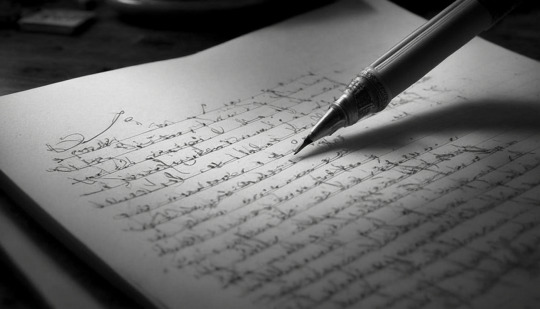
Mind Maps: For those who thrive on visual learning, mind maps are a creative and effective way to connect ideas. By using a central topic as the focal point and branching out into subtopics, mind maps visually represent the relationships between concepts. This type of note-taking enhances comprehension and helps learners see the bigger picture of a subject.
Flashcards: Ideal for quick recall and self-assessment, flashcards are concise notes that encapsulate key facts, terms, or concepts on one side, with corresponding explanations or definitions on the reverse side. This interactive method of note-taking is particularly beneficial for memorization and review, making it a popular choice for exam preparation.
Digital Notes: In the age of technology, traditional pen-and-paper notes have a digital counterpart. Digital note-taking apps allow users to create, organize, and access notes across various devices. This type of note-taking offers the convenience of search functionality, easy sharing, and the ability to incorporate multimedia elements such as images and audio recordings.
Types of Notes in Review
In the vast landscape of learning, these diverse types of notes cater to different preferences and learning styles. Lecture notes capture the spoken word, Cornell notes provide structure, mind maps visualize connections, flashcards aid in memorization, and digital notes embrace the convenience of technology. Each type contributes to the symphony of learning, harmonizing to create a comprehensive understanding of subjects.
Conclusion
As we navigate the ever-evolving world of education, understanding the types of notes available empowers learners to choose the method that resonates most with their individual styles. Whether it's the structured approach of Cornell notes, the visual appeal of mind maps, or the digital convenience of note-taking apps, notes remain an integral part of the learning experience. So, embrace the melody of learning, and let the various types of notes be your guide on the journey to knowledge and mastery.
1 note
·
View note
Text
Tactile Learners: Embracing the Power of Hands-On Education
Do you remember the joy of building your first sandcastle, shaping it with your hands, feeling the grains of sand between your fingers? Or perhaps you're the kind of person who learns best by diving into a task, by getting your hands dirty, and by experiencing things firsthand. If that's the case, you might be a tactile learner. In this blog article, we're going to explore the fascinating world of tactile learners, their unique learning style, and how we can harness this powerful way of learning to enrich our education and daily lives. So, put on your exploratory gloves, and let's dive in!
Unpacking the Term: Tactile Learning
Let's start by understanding what tactile learning is all about. Tactile learners are individuals who grasp information best through physical touch and hands-on experiences. They thrive when they can interact with their environment, using their sense of touch to explore and learn. For them, books and lectures are important, but nothing beats the satisfaction of doing things themselves.

The Five Senses Symphony
Our senses play a significant role in the learning process. We often hear about sight and hearing, but the sense of touch is a powerful player too. It connects us to the physical world in a unique way. Tactile learners, in particular, rely heavily on their sense of touch to absorb information and engage with their surroundings. Think of it as a sensory symphony, with touch being one of the star performers.
The Power of Hands-On Education
Now, you might wonder why being a tactile learner is so special. Well, it's all about the power of hands-on education. When we actively engage with a subject, it sticks in our minds better. Tactile learners excel in fields like science, art, and mechanics because they can dive right into experiments, art projects, or fixing things, allowing them to comprehend complex concepts with ease.
Imagine a science class where you don't just hear about chemical reactions but actually mix the compounds and feel the changes as they happen. It's like magic, but it's science in action!
Tactile Learning in the Digital Age
In today's digital age, where screens dominate our lives, it's easy to overlook the importance of tactile learning. However, tactile learners can harness technology too. Touchscreens, interactive simulations, and 3D printing are just a few examples of how they can adapt to this new world while staying true to their hands-on nature.
Learning Styles: Are You a Tactile Learner?
How do you know if you're a tactile learner? Well, here are some signs that might help you figure it out:
1. You Love Hands-On Activities
If you prefer building, crafting, or fixing things over reading or listening to instructions, you might be a tactile learner. Your hands are your most trusted tools.
2. You Remember Things by Doing
Tactile learners have an excellent memory when they physically engage with the material. Whether it's practicing a musical instrument, cooking a new recipe, or assembling furniture, you remember it best by doing it.
3. You Struggle with Pure Theory
Abstract theories and concepts might make your head spin, but when you can see, touch, and feel a real-world example, everything clicks into place.
4. You're Often Fidgety
Tactile learners can be fidgety when they're stuck in a passive learning environment. You might catch yourself tapping your fingers, doodling, or playing with objects to stay engaged.
5. You're a Problem-Solver
Tactile learners are natural problem-solvers. When you encounter an issue, you jump right in, trying different approaches, experimenting until you find the solution.
Embracing Tactile Learning
Now that you've identified your tactile learning tendencies, it's time to embrace them and make the most of this unique learning style. Here are some tips to help you, or someone you know, thrive as a tactile learner:
The Challenges of Being a Tactile Learner
While tactile learning is a remarkable way to absorb information, it does come with its own set of challenges. It's essential to be aware of them and find ways to overcome them:
1. Limited Accessibility
Not all learning materials or environments are tailored for tactile learners. It can be frustrating when you're forced into passive learning situations.

2. Time-Consuming
Hands-on learning can be more time-consuming than simply reading a book or listening to a lecture. It requires dedication, practice, and sometimes, more patience to master a subject through tactile learning.
3. Mess and Cleanup
Let's be honest; hands-on activities can get messy. Whether you're painting a masterpiece or conducting a science experiment, you'll need to deal with the aftermath. Be prepared to embrace the chaos!
4. Need for Space
Tactile learners often need space to spread out their materials and work on their projects. This can be a challenge in smaller living spaces or crowded environments.
5. Limited Collaboration
While tactile learners excel at independent problem-solving, they might miss out on the collaborative aspects of group learning. It's important to strike a balance and engage with others in shared activities.
Tips for Overcoming Tactile Learning Challenges
Don't let the challenges of tactile learning deter you. Here are some strategies to overcome these obstacles:
1. Advocate for Hands-On Learning
If you find yourself in a traditional classroom setting that doesn't cater to your learning style, don't hesitate to voice your preferences and seek out hands-on opportunities.
2. Time Management
Plan your time wisely. Make sure you allocate enough time for your hands-on projects while also balancing your other commitments.
3. Organize Your Space
Create a dedicated workspace at home where you can freely explore your tactile learning pursuits. This will help you stay organized and minimize the mess.
4. Find Like-Minded Individuals
Connect with fellow tactile learners who share your passion for hands-on learning. You can collaborate on projects, share ideas, and support each other.
Tactile Learning in Different Fields
Tactile learning isn't confined to a single field of study. It can be applied in various domains, each offering unique opportunities for tactile learners to shine:
1. Science and Engineering
Tactile learners make exceptional scientists and engineers. They love conducting experiments, building prototypes, and pushing the boundaries of what's possible.
2. Art and Creativity
For artists, sculptors, painters, and designers, tactile learning is second nature. They thrive on the physical act of creation and the sensory experience of their craft.
3. Medicine and Healthcare
Surgeons, nurses, and healthcare practitioners often rely on their tactile skills. Feeling and identifying specific structures or abnormalities is crucial in their work.
4. Trades and Crafts
From carpenters to electricians, tactile learners find their calling in the world of trades. Crafting, building, and fixing are their daily tasks.
5. Gardening and Agriculture
Green thumbs who revel in the world of plants and agriculture connect with the earth through tactile learning. They can sense the needs of each plant and know when to intervene.
youtube
The Future of Tactile Learning
As the world evolves, tactile learning remains a timeless and invaluable approach to education and personal growth. In fact, with the advent of technology, tactile learners can explore new dimensions of learning.
Virtual reality (VR) and augmented reality (AR) are emerging as powerful tools for tactile learning. They allow individuals to engage with virtual objects and environments, providing a sensory-rich experience that caters to the tactile learning style.
Additionally, 3D printing technology is revolutionizing the way tactile learners interact with physical objects. Whether it's creating prototypes, models, or art pieces, 3D printing opens up a world of possibilities.
The Takeaway
Tactile learners have a unique way of experiencing the world - one that involves diving in headfirst, getting their hands dirty, and savoring the tangible aspects of learning. While there may be challenges, the benefits of this learning style are undeniable. Whether you're a tactile learner or you know someone who is, embracing this hands-on approach can lead to a richer, more fulfilling educational experience and a deeper connection with the world around us.
0 notes
Text
Enhancing Your Reading Experience: The Art of Highlighting in Books
Reading is more than just the passive act of perusing words on a page; it's a dynamic and engaging experience that allows us to explore new worlds, gain knowledge, and connect with the thoughts and ideas of others. One way to make the most of your reading journey is by employing the practice of highlighting in books. This blog post delves into the art of highlighting, exploring its benefits, methods, and how it can transform the way you interact with written material.
The Power of Highlighting
Highlighting in books is a time-honored tradition, embraced by students, academics, avid readers, and professionals alike. At its core, it involves marking specific passages, sentences, or words within a text to draw attention to them. This simple act can have a profound impact on your reading experience. Here are some of the key advantages of highlighting:
Active Engagement: Highlighting encourages active reading. Instead of merely skimming through the text, you become an active participant, identifying and marking significant points.
Enhanced Comprehension: When you highlight, you're effectively identifying the core ideas, arguments, and supporting details within the text. This process aids in comprehension by helping you grasp the material's structure and key concepts.
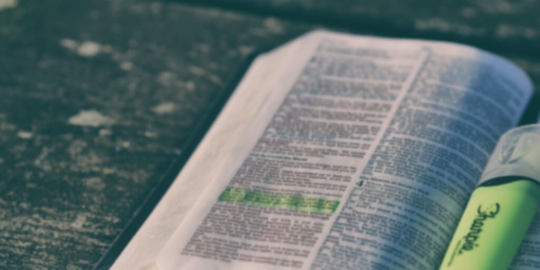
Effective Note-Taking: For students and researchers, highlighting can be a form of note-taking. It condenses the material into a more manageable format, making it easier to review and study later.
Organization: Highlighting enables you to organize the information within a book. By using different colors or symbols for various types of content, you create a visual roadmap to navigate the text efficiently.
Critical Thinking: The act of deciding what to highlight fosters critical thinking. You must evaluate the text's significance, determining what warrants attention and why.
Improved Retention: The highlighted sections serve as memory aids. When you revisit them, you're more likely to recall the essential ideas and concepts, reinforcing your understanding.
Methods of Highlighting
The methods and tools you choose for highlighting can significantly impact your reading experience. Let's explore various techniques and materials for effective highlighting:
Traditional Highlighters: Colored highlighter pens are a popular choice. Each color can represent different categories or levels of importance. For instance, yellow might indicate main ideas, while green highlights supporting evidence.
Colored Pencils: If you prefer a more subtle approach, colored pencils provide precision for underlining and coloring text. They also eliminate the risk of ink bleeding through the pages.
Post-It Flags: Adhesive flags, available in various colors, can be easily placed on specific pages or passages. They serve as visual indicators of important content, allowing for quick reference.
Digital Tools: E-readers and digital reading platforms often offer built-in highlighting features. Using a stylus or your finger, you can select and highlight text digitally. Digital highlights are usually searchable and can be organized into custom categories.
Marginal Notes: In addition to highlighting, consider jotting down notes or comments in the margins of your books. This practice, known as marginalia, enables you to record your thoughts, questions, and reflections as you read.
Symbols and Codes: Some readers develop their system of symbols or codes in the margins. For instance, an asterisk (*) might denote an important point, while a question mark (?) could indicate something to revisit or research further.
Tips for Effective Highlighting
Highlighting is a skill that can be honed over time. To make the most of your highlighting practice, consider these tips:
Have a Purpose: Before you start highlighting, determine your purpose. Are you extracting key points, noting examples, or identifying supporting evidence? Having a clear objective will guide your highlighting choices.
Use a Consistent System: If you're using colors or symbols, establish a consistent system and stick to it throughout the book. This helps maintain organization and clarity.
Highlight Sparingly: Avoid over-highlighting. Highlight only the most crucial information to prevent clutter and ensure that the highlights truly stand out.
Revisit and Review: Periodically revisit the highlighted sections and review your notes. This reinforces your understanding and helps you retain the information.
Balance Digital and Physical: If you read both physical books and digital content, consider how you'll integrate highlighting into both formats. Digital tools offer convenience, but physical highlighting can be a tactile and memorable experience.
Respect Borrowed Books: When highlighting borrowed or library books, be considerate. Use removable tabs or lightly underline with a pencil to avoid causing permanent damage.
youtube
Conclusion
Highlighting in books is a powerful tool that can transform your reading experience from passive consumption to active engagement. Whether you're a student aiming to excel in your studies, a researcher seeking to extract key information, or a dedicated reader looking to deepen your connection with a text, highlighting can be your ally.
By employing various methods and adhering to best practices, you can harness the benefits of highlighting to enhance comprehension, retention, and organization. So, the next time you embark on a reading adventure, consider picking up your favorite highlighter or digital stylus and embark on a journey of discovery, one vibrant mark at a time.
1 note
·
View note
Text
The Magic of Imagination: Why Everyone Should Read Novels
Hey there, fellow bookworms and adventure enthusiasts! Have you ever felt the thrill of being transported to another world, living countless lives, all while nestled in your favorite reading nook? If not, you're missing out on the incredible journey that novels offer. In this article, we're diving deep into the enchanting world of reading novels – the gateway to imagination, empathy, and endless learning. So, grab a cozy blanket and let's explore why reading novels should be a vital part of everyone's life.
Embarking on Literary Adventures: The Joy of Reading Novels
Imagine cracking open the cover of a novel and stepping into a realm where your surroundings fade away, and your mind becomes the canvas for the author's words. This is the magic of reading novels. Each book holds the promise of a unique adventure, an opportunity to live vicariously through characters, and a chance to expand your horizons without leaving your chair.
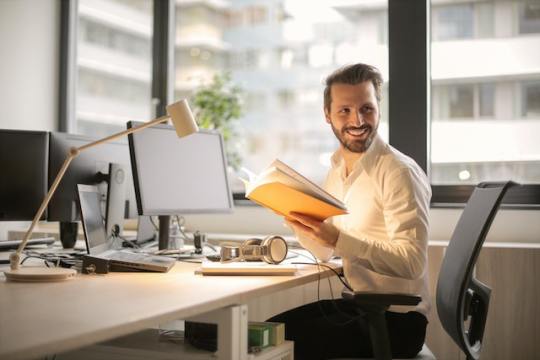
The Power of Imagination: Creating Worlds in Your Mind
When you Read Novels, you become a co-creator of the story. The author provides the words, but it's your imagination that brings the scenes, characters, and landscapes to life. As you immerse yourself in the narrative, your mind conjures vivid images, infuses emotions, and weaves connections that are uniquely yours.
Empathy Through Fiction: Stepping into Others' Shoes
Novels have this incredible ability to nurture empathy within us. As you delve into the lives of characters from different walks of life, you begin to understand their struggles, dreams, and fears. This emotional journey teaches you to see the world from various perspectives, fostering compassion and understanding for real people you encounter in your own life.
Learning Through Stories: Nuggets of Wisdom in Fiction
While novels are a source of entertainment, they're also packed with wisdom. Authors often embed life lessons, historical insights, and philosophical ponderings within their stories. Whether it's a classic tale or a modern bestseller, each novel has the potential to teach you something new or challenge your existing beliefs.
Escaping and Reflecting: Stress Relief and Self-Discovery
Life can be a whirlwind of responsibilities, stress, and routines. Novels offer an escape hatch into different worlds, a chance to take a breather from reality. And as paradoxical as it may sound, diving into fictional worlds can often lead to profound self-discovery and personal reflection.
The Art of Language: Enhancing Vocabulary and Expression
Novels are treasure troves of language. Authors paint pictures with their words, introducing you to new ways of expressing yourself. Reading novels exposes you to a diverse range of vocabulary, which in turn enhances your communication skills and allows you to articulate your thoughts more eloquently.
Cognitive Workout: Exercising Your Brain with Stories
Just like physical exercise keeps your body fit, reading novels is a workout for your brain. It engages your cognitive faculties as you follow complex plots, anticipate twists, and analyze character motivations. This mental gymnastics contributes to improved focus, concentration, and analytical thinking.
Cultural Exploration: Discovering New Perspectives
Novels can serve as windows into different cultures, time periods, and social landscapes. Whether you're exploring the bustling streets of a foreign city or delving into the pages of history, novels provide a passport to understanding and appreciating the rich tapestry of human experience.
Bonding Through Book Clubs: Building Connections Over Stories
Reading novels becomes even more enriching when shared with others. Book clubs offer a platform to discuss themes, dissect characters' actions, and share your interpretations. These gatherings foster meaningful connections, opening the door to diverse viewpoints and spirited conversations.
The Digital Age and Reading Novels: Finding Balance
In the digital age, where screens vie for our attention, the allure of novels remains timeless. E-books and audiobooks have made literature even more accessible, allowing you to carry entire libraries in your pocket. However, finding a balance between digital convenience and the tactile pleasure of holding a physical book can enhance your reading experience.
Cultivating a Reading Habit: Carving Out Time for Novels
With busy schedules and endless distractions, dedicating time to read can be a challenge. But consider it an investment in yourself. Create a reading routine that aligns with your preferences – whether it's a quiet morning ritual or a cozy bedtime indulgence.
Unlocking Infinite Worlds: The Everlasting Appeal of Novels
youtube
From mystery to romance, fantasy to historical fiction, novels offer a vast landscape of genres to explore. Each novel is a portal to a new adventure, a chance to learn, feel, and experience life in a myriad of ways. So, whether you're a seasoned reader or someone just starting to dip their toes into the literary ocean, remember that novels hold the key to a world of wonder waiting to be unlocked through the turn of each page.
In a Nutshell: Embracing the Magic of Reading Novels
In conclusion, dear readers, novels are not just stories; they're gateways to imagination, empathy, and growth. They invite you to step into the shoes of others, travel through time, and explore the corners of your own mind. So, go ahead, pick up a novel that piques your interest, and let the adventure unfold. Whether you're solving mysteries, falling in love, or unraveling the complexities of human nature, novels promise an unforgettable journey that will leave an indelible mark on your heart and mind.
0 notes
Text
Kinetic Learner: Unleashing the Power of Movement in Education
In the realm of education, we encounter diverse learning styles and preferences among students. Among these, the kinetic learner stands out as a vibrant individual who learns best through movement and physical interaction. In this article, we will delve into the world of the kinetic learner, uncovering their unique traits, understanding their learning process, and discovering effective teaching methods that cater to their needs. Let's embark on a journey to unleash the power of movement in education and nurture the kinetic learner's potential

Kinetic Learner: Embracing Movement to Excel
At the core of the kinetic learner's style lies a profound connection between movement and cognition. When engaged in physical activities, the kinetic learner's brain lights up, paving the way for enhanced comprehension and retention of information. Harnessing this connection effectively can unlock a world of opportunities for educators and learners alike. But what makes someone a kinetic learner? Let's explore their characteristics and strengths.
Identifying a Kinetic Learner
Kinetic learners display distinct characteristics that set them apart in the classroom. They often exhibit restless behavior, preferring to move, fidget, and explore their surroundings actively. These individuals are not easily satisfied with passive learning methods; instead, they thrive in an environment that encourages hands-on experiences.
The Strengths of Kinesthetic Learning
Kinetic learners possess unique strengths that make them exceptional contributors to the learning process. By leveraging these strengths, educators can tap into their full potential and nurture their growth effectively. Some key strengths include:
Physical Memory: Kinetic learners have an exceptional ability to remember information when associated with physical actions or movements. This attribute can be harnessed to facilitate better understanding and recall of complex concepts.
Enhanced Focus: Engaging in physical activities allows kinetic learners to channel their energy and focus better on the subject matter. It helps them remain attentive and actively involved in the learning process.
Problem-Solving Skills: The hands-on approach of kinetic learning cultivates problem-solving abilities, as learners explore and experiment with different solutions through physical engagement.
Collaborative Spirit: Kinesthetic activities often involve group participation, fostering a sense of collaboration and teamwork among kinetic learners.
Strategies to Empower Kinetic Learners
To create an inclusive and effective learning environment, educators must employ appropriate strategies tailored to the needs of kinetic learners. Incorporating movement-based activities, interactive exercises, and multisensory approaches can significantly impact their learning experience. Below are some actionable strategies to empower kinetic learners:
1. Incorporate Kinesthetic Learning Tools
Integrate a variety of kinesthetic learning tools and materials, such as educational games, puzzles, and models, to promote hands-on exploration and learning.
2. Implement Role-Playing Activities
Encourage role-playing activities that enable kinetic learners to embody historical figures or scientific principles, fostering a deeper understanding of the subject matter.
3. Utilize Movement Breaks
Introduce short movement breaks during lectures to help kinetic learners refocus and recharge, enhancing their ability to absorb information effectively.
4. Organize Field Trips and Experiments
Plan field trips and experiments that allow kinetic learners to engage with real-world scenarios, providing practical applications of theoretical knowledge.
5. Integrate Technology with Movement
Leverage educational apps and software that combine interactive technology with physical movements, catering to the kinetic learner's tech-savvy nature.
6. Gamify Learning
Incorporate gamification elements in the curriculum to stimulate the kinetic learner's interest and motivation while reinforcing key concepts.
youtube
Conclusion: Embrace the Power of Kinesthetic Learning
As we conclude our exploration of the kinetic learner, it becomes evident that embracing movement and physical engagement in education can revolutionize the learning experience. Educators, parents, and learners alike must recognize and appreciate the value of kinesthetic learning. By tailoring teaching methods to cater to the kinetic learner's unique strengths, we can unleash their full potential and pave the way for a brighter and more engaging educational journey.
So, let us celebrate the kinetic learner, an inspiring individual who dances through the world of knowledge, leaving footprints of creativity, innovation, and boundless curiosity.
0 notes
Text
Types of Notes: Exploring Different Methods for Effective Note-Taking
In our fast-paced and information-rich world, the ability to capture and retain knowledge is more crucial than ever. Note-taking has long been recognized as a powerful tool for retaining information, organizing thoughts, and boosting productivity. From scribbling ideas in the margins of a textbook to leveraging cutting-edge digital applications, note-taking methods have evolved to suit our modern needs.
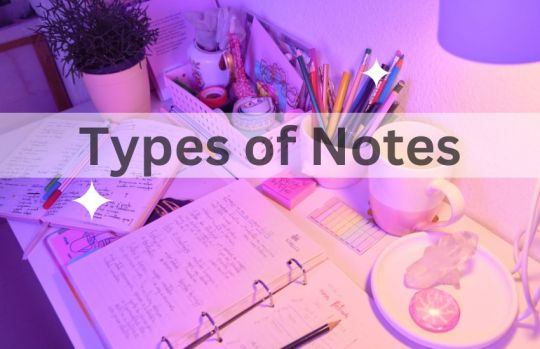
In this comprehensive guide, we will delve into the world of note-taking and explore the various types of notes that can revolutionize your learning and organizational abilities. Whether you're a student, a professional, or an individual seeking to enhance your memory, this article will provide valuable insights into different note-taking methods, their benefits, and best practices.
By the end of this article, you will have a deep understanding of handwritten notes, digital notes, audio notes, visual notes, and the concept of hybrid notes. You will gain practical tips and strategies for implementing these methods effectively, enabling you to take control of your learning journey and achieve greater success in various aspects of your life.
So, whether you're embarking on a new academic endeavor, aiming to improve your professional skills, or simply seeking a way to better organize your thoughts and ideas, join us as we embark on this exploration of the diverse world of note-taking methods. Let's uncover the power of notes and unlock your full potential!
Handwritten Notes
Handwritten notes have long been a popular choice among learners and professionals alike. The act of physically writing down information helps reinforce memory retention and engagement. Moreover, handwritten notes allow for personalization and creativity, enabling you to customize your notes with diagrams, symbols, and highlighting techniques.
To maximize the effectiveness of handwritten notes, consider the following tips:
Use abbreviations and shorthand: Develop your own system of abbreviations to speed up the note-taking process and capture information more efficiently. Organize your notes with headings and bullet points: Structuring your notes using clear headings and bullet points facilitates easy review and comprehension. Review and rewrite: Transcribing your handwritten notes into a digital format or rewriting them after a study session can help reinforce the information in your mind.
Digital Notes
With the advent of technology, digital note-taking has gained popularity due to its convenience and accessibility. Various applications and software offer features like cloud synchronization, searchable text, and multimedia integration, making it easier to organize and retrieve information quickly.
Consider the following best practices when utilizing digital notes:
Choose the right digital note-taking application: Explore different applications such as Evernote, OneNote, or Google Keep, and find the one that aligns with your needs and preferences. Utilize tags and categories: Assigning relevant tags and categorizing your notes helps streamline the organization process and enables swift retrieval. Backup your notes: To prevent any potential data loss, regularly back up your digital notes to a cloud storage service or an external device.
Audio Notes
In certain situations, traditional note-taking methods may not suffice, such as during lectures or interviews where information is delivered rapidly. Audio notes come to the rescue in such scenarios, allowing you to capture spoken content accurately.
Here are some tips for effective audio note-taking:
Use a reliable recording device or application: Ensure you have a high-quality recording device or a dedicated application on your smartphone to capture clear audio. Take supplementary notes: While recording, jot down brief keywords or key phrases that will serve as cues when you review the audio later. Label and organize your audio files: Maintain a clear and consistent naming convention for your audio files to facilitate easy retrieval and categorization.
Visual Notes
For individuals who have a preference for visual learning or possess a strong visual memory, incorporating visual notes can be incredibly beneficial. Visual notes involve the use of diagrams, mind maps, flowcharts, and other visual representations to capture and organize information.
Consider the following techniques for creating effective visual notes:
Use colors and symbols: Assign different colors and symbols to represent various concepts or ideas, making it easier to associate and remember the information.
youtube
Mind mapping: Create mind maps to visually connect different ideas, helping you understand the relationships between different topics. Incorporate visuals and illustrations: Integrate relevant images, drawings, or icons to enhance the visual appeal and aid in recalling information.
Hybrid Notes
As the name suggests, hybrid notes combine multiple note-taking methods to leverage their individual advantages. This approach allows you to tailor your note-taking process based on the context and your personal preferences.
Consider the following tips for creating effective hybrid notes:
Determine the appropriate combination: Identify which note-taking methods work best for specific situations, such as using handwritten notes during lectures and digital notes for research projects. Integrate and cross-reference: When using hybrid notes, ensure that your different notes are interconnected and cross-referenced for seamless information retrieval. Regularly review and consolidate: Take time to review and consolidate your hybrid notes to maintain organization and ensure you don't miss any valuable insights.
Conclusion
In conclusion, effective note-taking is a skill that can significantly impact your productivity, learning, and organization. Throughout this article, we have explored various types of notes and the benefits they offer. From handwritten notes that engage your memory to digital notes that provide convenience and accessibility, each method has its own strengths.
We have also discussed audio notes, which are invaluable for capturing spoken content, and visual notes, which cater to visual learners and aid in comprehension. Additionally, hybrid notes, combining different methods, allow for personalized and context-specific note-taking.
To make the most of your note-taking experience, remember to implement best practices. Whether it's using abbreviations and shorthand in your handwritten notes, utilizing tags and categories in digital notes, or supplementing audio recordings with keywords, each technique serves to enhance your note-taking process.
Regular review and consolidation of your notes are vital for reinforcing knowledge and maintaining organization. By incorporating these strategies into your note-taking routine, you can optimize your learning, boost your productivity, and make information retrieval a breeze.
1 note
·
View note
Text
Tactile Learner
In the fast-paced world we live in today, notes have become an integral part of our lives. From jotting down important information to organizing thoughts and ideas, notes help us stay organized and efficient. However, not all notes are created equal. There are various types of notes that serve different purposes and cater to specific needs. In this comprehensive guide, we will explore the different types of notes and how they can be used effectively to enhance productivity and streamline information management Tactile Learner.
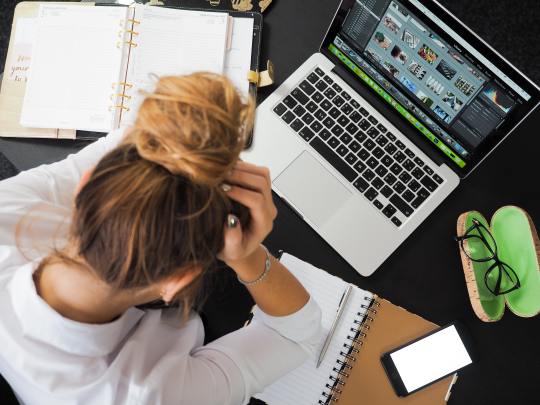
1. Text Notes
Text notes are the most common and straightforward type of notes. They involve writing down information in a textual format using either pen and paper or digital tools. Text notes can be used for a variety of purposes, such as capturing meeting minutes, summarizing key points from lectures or presentations, or simply making to-do lists. The beauty of text notes lies in their simplicity and versatility. With text notes, you have the freedom to organize information in a structured or unstructured manner, depending on your preference.
2. Voice Notes
Voice notes have gained popularity in recent years, thanks to the advancements in mobile technology. With voice notes, you can record audio snippets to capture ideas, reminders, or important details on the go. This type of note is particularly useful when you need to quickly capture information without the need for writing. Voice notes can be transcribed later or used as standalone audio recordings. They are ideal for brainstorming sessions, interviews, or when you want to preserve the tone and context of a conversation.
3. Image Notes
Sometimes, a picture is worth a thousand words. Image notes involve capturing visual information using a camera or a smartphone. They are perfect for documenting diagrams, charts, or any visual content that is difficult to convey through text alone. Image notes are commonly used in fields like architecture, design, and art, where visuals play a crucial role. By incorporating images into your notes, you can enhance comprehension and make complex concepts more accessible.
4. Mind Maps
Mind maps are a creative and visually engaging way to take notes. They involve capturing ideas, concepts, or information in a hierarchical structure. Mind maps start with a central theme or concept, and branches radiate outwards, representing sub-topics or related ideas. This type of note-taking encourages free association and stimulates creative thinking. Mind maps are particularly useful for brainstorming, problem-solving, and organizing complex information.
5. Task-specific Notes
Task-specific notes are tailored to a particular purpose or activity. For example, meeting notes focus on capturing discussions, decisions, and action items during meetings. Lecture notes concentrate on recording key points and insights from educational sessions. Research notes involve documenting findings, references, and sources during the research process. By using task-specific notes, you can streamline your note-taking process and ensure that information is organized according to its intended use.
6. Collaborative Notes
Collaborative notes promote teamwork and knowledge sharing. They involve multiple individuals contributing and editing notes in real-time. Collaborative note-taking platforms like Google Docs or Microsoft OneNote allow team members to collaborate seamlessly, making it easier to capture collective insights and create a shared knowledge base. Collaborative notes are valuable for group projects, team meetings, or workshops, where multiple perspectives need to be captured and consolidated.
youtube
Conclusion
Notes play a crucial role in our personal and professional lives. They help us remember important information, stay organized, and generate new ideas. By understanding the different types of notes available, you can choose the most suitable format for your needs. Whether it's text notes for simplicity, voice notes for quick capturing, image notes for visual content, mind maps for creative thinking, task-specific notes for focused activities, or collaborative
0 notes
Text
How to Take Notes From Textbook
Taking notes from a textbook can be a challenging task, especially when dealing with complex or dense material. However, with the right strategies, it's possible to take effective notes that capture the most important information. One strategy is to start by previewing the material before diving in.
This may involve scanning the headings, subheadings, and any bolded or italicized text to get a sense of the main ideas and concepts. Once you have a general understanding of the material, you can begin reading more closely and taking notes as you go. Some effective How to Take Notes From Textbook strategies include creating an outline, summarizing key points, and highlighting or underlining important information.
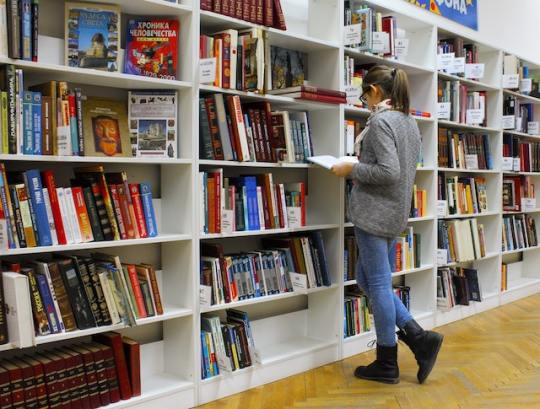
It's also important to actively engage with the material by asking questions, making connections, and identifying areas that may require further research or clarification. After taking notes, it's helpful to review and summarize the material, either by creating flashcards or by re-reading and condensing your notes. By using these strategies, individuals can take effective notes from textbooks and improve their ability to learn and retain information.
Another helpful strategy for taking notes from a textbook is to use active reading techniques. This involves engaging with the material by asking questions, making connections, and summarizing key ideas. One way to do this is to use the SQ3R method, which stands for Survey, Question, Read, Recite, and Review. This method involves surveying the material before reading, generating questions based on the headings and subheadings, reading actively and taking notes, reciting the information to reinforce learning, and reviewing the material regularly.
Additionally, it can be helpful to use visual aids like diagrams or mind maps to help organize information and identify key concepts. Finally, it's important to stay focused and avoid distractions while reading and taking notes. This may involve finding a quiet space, turning off notifications on electronic devices, and taking regular breaks to prevent fatigue. By incorporating these strategies into their note-taking practices, individuals can improve their ability to learn from textbooks and retain information more effectively.
Another helpful strategy for taking notes from a textbook is to actively engage with the material by making connections to other sources of information or personal experiences. This can help to contextualize the information and make it more meaningful and memorable. For example, if you are reading about a historical event, you could think about how it relates to current events or other historical events you have learned about.
youtube
You could also consider how the information relates to your own experiences or interests. Additionally, it can be helpful to use mnemonic devices or memory aids to help retain information. This could involve creating acronyms or using visualization techniques to associate information with images or mental cues.
Finally, it's important to review and summarize the information regularly to reinforce learning and identify areas that may require further study. By using these strategies, individuals can take effective notes from textbooks and improve their ability to learn and retain information in a meaningful and lasting way.
0 notes
Text
Kinesthetic Tactile
Kinesthetic tactile learning styles are two of the most common learning styles that people have. While many people may be familiar with visual and auditory learning, kinesthetic and tactile learning involve physical experiences and interactions with the environment. In this blog post, we will explore these two learning styles in more detail, including how they differ from other learning styles and how to leverage them to enhance learning outcomes.
What is Kinesthetic Learning?
Kinesthetic learners learn best through physical experiences and hands-on activities. They thrive in environments where they can actively engage with the material and explore through movement. Kinesthetic learners may struggle with traditional classroom settings that prioritize lecture-style learning and passive listening.
Examples of activities that can help kinesthetic learners include:
Role-playing exercises
Interactive simulations
Experiments and labs
Physical activities like sports or dance
Manipulating objects or tools
What is Tactile Learning?
Tactile learners, on the other hand, learn best through touch and physical sensations. They need to physically interact with the material to fully grasp it. Tactile learners may struggle with abstract concepts or ideas that don't have a physical component.
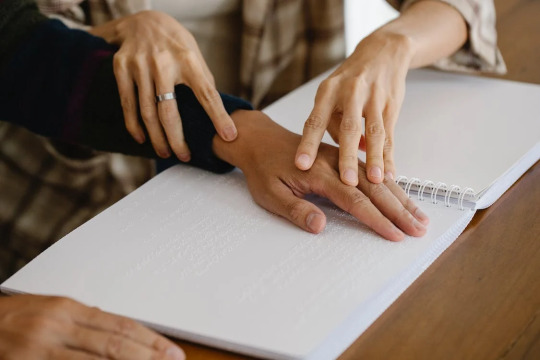
Examples of activities that can help tactile learners include:
Creating models or dioramas
Using manipulatives or tools
Drawing or sketching
Making crafts or building things
Playing with puzzles or building blocks
How to Leverage Kinesthetic and Tactile Learning
To leverage kinesthetic and tactile learning, it's important to incorporate activities and experiences that engage these learning styles. Some strategies include:
Incorporating hands-on activities and experiments into lesson plans
Encouraging movement and physical activity during learning
Providing manipulatives or tools for students to interact with
Creating visual aids, such as diagrams or videos, that can be manipulated or interacted with
Encouraging students to take notes or draw pictures to help with memory retention
It's important to note that while some students may have a strong preference for kinesthetic or tactile learning, it's rare for someone to exclusively use only one learning style. Incorporating a variety of learning styles can benefit all students and can help reinforce material in different ways.
In conclusion, kinesthetic and tactile learning styles offer valuable opportunities for engagement and enhanced learning outcomes. By incorporating physical experiences, movement, and touch into lesson plans, educators can create a more inclusive and effective learning environment for all students.
0 notes
Text
Best Paper Sources
Paper sources allude to the materials or substances used to make paper items. Some normal paper sources incorporate wood mash, reused paper, cotton, and hemp. The decision of paper source can influence the properties and qualities of the last paper item, like its solidarity, sturdiness, and ecological effect. As of late, there has been a developing spotlight on utilizing practical and harmless to the ecosystem paper sources, for example, reused paper and plant-based materials.
Sorts of Paper Sources
Wood Mash: This is the most well-known kind of paper source, and is produced using the filaments of trees, like pine, tidy, and eucalyptus. Wood mash paper is normally utilized for things like books, papers, and office paper.

Reused Paper: This kind of paper is produced using recently utilized paper items, like old papers, cardboard, and office paper. Reusing paper rations normal assets and lessens how much waste shipped off landfills.
Cotton: Cotton paper is produced using the strands of the cotton plant, which is an inexhaustible asset. Cotton paper is known for its excellent and toughness, and is frequently utilized for things like business cards and letterhead.
Hemp: This kind of paper is produced using the strands of the hemp plant, which is a sustainable asset. It is serious areas of strength for a, and eco-accommodating option in contrast to customary paper sources. It is in many cases utilized in the development of moving papers, monetary certificates and channel papers.
Properties and Attributes
Strength: The strength of paper can shift contingent upon the sort of paper source utilized. Wood mash paper is by and large more grounded than reused paper, while cotton and hemp paper are known for their high strength and sturdiness.
Sturdiness: The toughness of paper can likewise rely upon the paper source utilized. Wood mash paper is for the most part less strong than cotton or hemp paper, while reused paper can be less sturdy than virgin paper.
Natural Effect: The ecological effect of paper can fluctuate contingent upon the paper source utilized. Wood mash paper is frequently obtained from impractical and non-inexhaustible backwoods, which can prompt deforestation and territory obliteration. Reused paper is viewed as more harmless to the ecosystem than virgin paper, as it moderates regular assets and decreases squander in landfills. Cotton and hemp are viewed as feasible sources and have a lower natural effect than conventional paper sources.
Feasible and Harmless to the ecosystem Paper Sources Reused Paper: This is viewed as one of the most feasible and harmless to the ecosystem paper sources as it moderates normal assets and decreases squander in landfills. Reused paper is produced using recently utilized paper items, like old papers, cardboard, and office paper, and ordinarily requires less energy and water to deliver contrasted with virgin paper.
Plant-based materials: Plant-based materials, for example, bamboo, hemp and sugarcane are considered harmless to the ecosystem as they are inexhaustible assets and have a lower ecological effect than customary paper sources. Bamboo, for instance, is a quickly developing grass that doesn't need replanting and utilizes less water than trees. While, hemp and sugarcane are likewise viewed as feasible sources as they are developed without the utilization of pesticides, herbicides and manufactured composts.
FSC-Confirmed paper: Paper that is affirmed by the Woodland Stewardship Board (FSC) is considered harmless to the ecosystem since it is obtained from capably oversaw backwoods. This accreditation guarantees that the paper is created utilizing economical techniques that safeguard the climate and the freedoms of nearby networks.
youtube
Post-buyer reused content: The utilization of post-purchaser reused content in paper items is one more method for making paper all the more harmless to the ecosystem. This implies that paper is caused utilizing a high level of reused materials that to have proactively been utilized by shoppers, instead of virgin materials.
Synopsis of primary concerns
In synopsis, paper sources allude to the materials or substances used to make paper items. Some normal paper sources incorporate wood mash, reused paper, cotton, and hemp. The decision of paper source can influence the properties and qualities of the last paper item, like its solidarity, sturdiness, and natural effect.
Feasible and harmless to the ecosystem paper sources incorporate reused paper, plant-based materials, for example, bamboo, hemp and sugarcane, FSC-Guaranteed endlessly paper with a high level of post-buyer reused content. These choices preserve normal assets, lessen squander in landfills, and have a lower natural effect than conventional paper sources. It is critical to consider the natural effect of paper while picking paper items and to search for choices that are produced using economical and harmless to the ecosystem sources.
0 notes
Text
Highlighting Tips
When you want to make your studying environment more positive, you can use study tools to help. Study tools can be anything from flashcards to interactive games. Whether you're looking to increase your studying efficiency or simply want to make your studying environment more enjoyable, these tools can be a great addition.
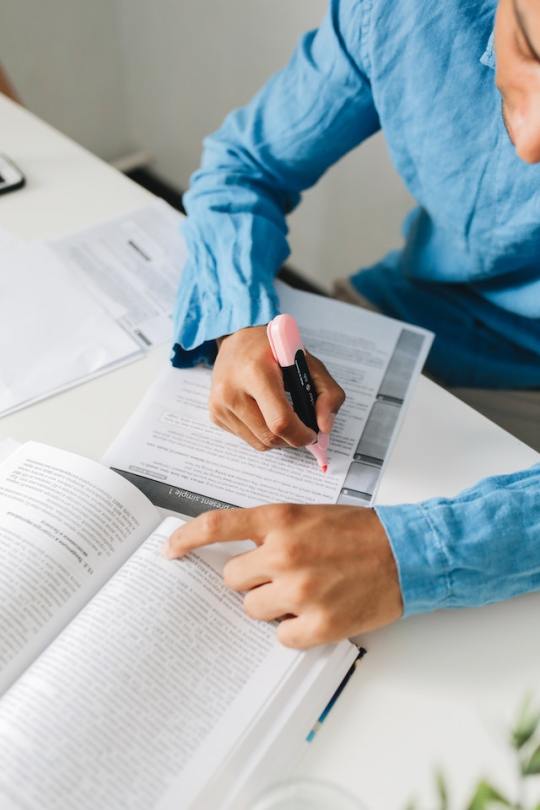
Highlighting Tips is an important part of any writer's arsenal. Whether you're a beginner or an experienced writer, highlighting is a crucial skill that you can use in order to make your writing more visible. In this blog post, we'll be looking at some tips on how to highlight your writing. We'll also discuss the different types of highlighting and why they're so important.
It can help you to identify important points in a text, and it can make your writing more effective. In this blog post, we'll be looking at a few essential tips on how to highlight. We'll also look at some common mistakes made when highlighting. So make sure you're well-prepared for your next writing session by reading this blog post.
How to Highlights Your Study Areas
Highlighting your study areas will help you focus on what you need to focus on and make your studying more efficient. By highlighting your study areas, you can make it easier for yourself to stay focused and continue learning. You can use a variety of methods to highlight your study areas. You can use highlights on your worksheet, in your notes, and in your text.
You can also use highlights to help you stay organized in your studying. Highlighting your study areas will also help you to be more visible in your class. When you are highlighted, you will be more visible to other students and the teacher. This will make it easier for you to understand what you are talking about and to learn faster.
Use a highlighter to highlight important points
You may have heard the saying “you are what you eat.” Well, that phrase may be true for some, but it’s not always true for others. Some people are born with certain physical characteristics that make them ideal candidates for certain foods. For example, some people are naturally tall and some people are naturally thin.
If you have a child that is naturally tall, you may want to try to eat foods that are tall-friendly. The same goes for thin people. If you have a child that is naturally thin, you may want to try to eat foods that are thin-friendly. The important thing is to be mindful of what you are eating and how it might affect your child. You can use a highlighter to help you highlight important points.
youtube
Use a highlighting tool to help you organize your documents
When you're working with a lot of data, it can be hard to keep track of where each document comes from. You might want to use a highlighting tool to help you organize your data. A highlighting tool can help you highlight different parts of your document, so that you can quickly identify which information is important. You can also use a highlighting tool to help you organize your data.
A highlighting tool can help you quickly identify which information is important and which is not. It can also help you to highlight different types of information, such as text, images, and videos. You can also use a highlighting tool to help you to see the different layers in your document.
Use a highlighting tool to make your writing more interesting
A highlighting tool can help you to highlight your text, make your writing more legible, and make your writing more concise. There are many different types of highlighting tools, and it's important to find one that is perfect for your writing style. You can use a highlighting tool to highlight specific words, phrases, or clauses. You can also use a highlighting tool to make your writing more concise. A concise writing style is important for making your writing more effective. With a few helpful tips, you can create a writing style that is perfect for you.
Use a highlighting tool to make your photos more beautiful
You can use a highlighting tool to make your photos more beautiful. A highlighting tool is a tool that helps you to highlight certain areas of your photos. A highlighting tool can be used to make your photos more beautiful, more readable, and more organized. You can use a highlighting tool to make your photos more beautiful by using different colors, styles, and techniques. You can also use a highlighting tool to make your photos more beautiful by using light and darkeners. You can also use a highlighting tool to make your photos more beautiful by using different light and darkening techniques.
Conclusion
There are so many ways to highlight and highlighting can be done in so many different ways for many different purposes. It is always best to research the different looks you can achieve and the tools you can use when highlighting so you can have the best possible product.
There are pros and cons to highlighting, so it's important to know what works for you and what doesn't. We've highlighted the two most popular ways to highlight, in case you're not sure which one to use for your writing. Keep these tips in mind as you are structuring your text!.
2 notes
·
View notes